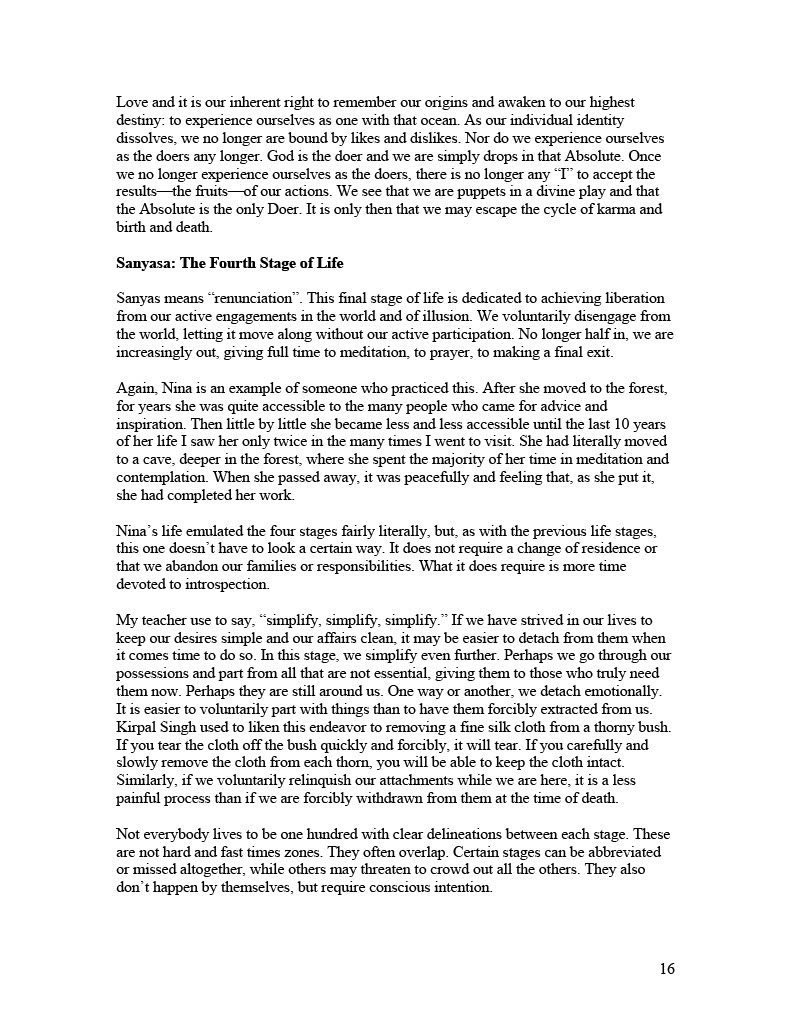Āśramas
In Indian philosophy, human life is seen as a journey through four –often consecutive –stages, or āśramas. These āśramas are often but not always experienced consecutively. They are: brahmacarya (student life), gṛhastha (householder life), vānaprastha (forest dweller or hermit stage), and saṃnyāsa (renunciate stage). Each stage is sometimes said to align with one of the four puruṣārthas, or aims of life: dharma (duty or ethics), artha (material security), kāma (desire or enjoyment), and mokṣa (liberation) respectively. Viewing life through this framework not only helps us understand life’s transitions but also contextualizes our relationship with the kalās (arts), vidyās (sciences), teachers, texts and traditions.
Dr. Claudia Welch’s attached article offers an introduction into these āśramas (stages) and puruṣārthas (aims). From the ethical foundations of dharma in brahmacarya, to the practical and material focus of gṛhastha, the introspective practices of vānaprastha, and finally, the transcendence of saṃnyāsa, this journey provides a lens through which our connection to the arts, sciences, and philosophy may become richer and more nuanced. The article delves into these stages and aims, offering insight into how they can support a peaceful, purposeful life.
Related Satsangam Offerings:
Vedic Threads
is Satsangam’s twice-monthly live, online membership where guest instructors introduce us to various Indian wisdom traditions. Some sessions that relate specifically to the 4 upavedas:


















